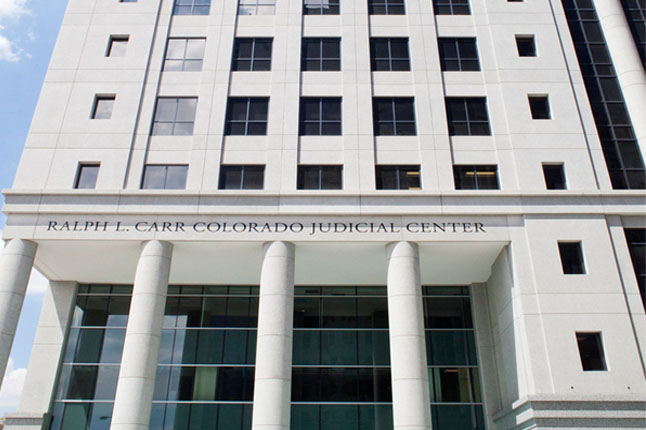
Ten years, one ruling from the Colorado Court of Appeals, two from the state Supreme Court and a petition to the nation’s highest court. The Colorado Supreme Court has decided an issue of double jeopardy in a case in which a defendant’s second trial is still pending, eight years after his first trial for the underlying charges. Since its beginning, the case has bounced back and forth through Colorado’s courts, and the state Supreme Court decided a different issue in the same case in 2015. The U.S. Supreme Court denied review of that previous issue in 2016.
In Re People v. Stackhouse, the Colorado Supreme Court on June 18 reversed an order from a district court that allowed the state to retry defendant James Robert Stackhouse on only one of many instances of alleged sexual assault on a child for which the state charged him. The Supreme Court ruled the district court had erroneously concluded the jury in Stackhouse’s first trial had necessarily found he did not commit multiple acts of assault, and moreover could not be retried for more than a single assault. The only certain fact, the court said, is that the jury did not unanimously agree Stackhouse engaged in two or more of five types of sexual abuse specified to them on a form.
CASE BACKGROUND
In 2008, Stackhouse was charged with one count each of sexual assault on a child, sexual assault on a child by a person in a position of trust, and the sentence enhancer of sexual assault on a child as part of a pattern of abuse. In 2010, a jury found Stackhouse guilty of the first two charges but not on the pattern of abuse. A post-conviction court vacated his convictions and set a new trial because of the district court’s failure to give a unanimity instruction after Stackhouse filed for relief on the grounds of ineffective assistance of counsel.
For his pending second trial, Stackhouse faced the two counts the first jury convicted him on, but not retrial on the charge of a pattern of abuse. The district court granted his attorney’s motion to restrict the prosecution in his second trial to a single allegation of sexual abuse based on a 2007 report to a preschool teacher. The court agreed with the assertion that “because the first jury ‘unanimously found that the sexual assault was not committed as part of a pattern of abuse,’ the jury ‘necessarily found that Mr. Stackhouse did not commit two or more incidents of sexual contact upon [the victim].’”
In granting the motion, the district court stated “the import of the no pattern finding is that those 12 individuals focused on a singular act that they believed was proven beyond a reasonable doubt.”
The Supreme Court found the trial record did not support that conclusion. A special interrogatory in Stackhouse’s first trial instructed the jury to find a pattern of abuse only if the members agreed unanimously that Stackhouse had committed two or more types of sexual abuse out of a list of five different and very specific types they were given. But the jury did not have the option to find Stackhouse had committee multiple instances of one type of abuse that constituted a pattern.
According to the Supreme Court, the record shows the jury was uncertain how to respond to the special interrogatory based on clarification they asked for during deliberations. According to the record, the judge told the jurors in order to find a pattern of abuse, they had to unanimously agree that Stackhouse had committed instances of at least two of the five types of sexual abuse the jurors were given to “mark the boxes as indicated in the interrogatory.”
“Concluding that the jury lacked unanimity as to the commission of two or more types of abuse does not require — or even permi — a conclusion that the jury necessarily and unanimously agreed that Mr. Stackhouse did not engage in multiple acts of abuse of a single type,” wrote Justice Melissa Hart in the Supreme Court’s opinion. “We cannot know and should not speculate. All we do know is that the jury did not unanimously agree that Mr. Stackhouse engaged in two or more of the five specified types of sexual abuse and therefore could not check two of the boxes on the form.”
UP TO THE U.S. SUPREME COURT AND BACK
The court’s ruling last week was not the first time People v. Stackhouse had come before it. Stackhosue had appealed his convictions and argued the district court had improperly closed the courtroom to the public during jury selection, constituting a structural error requiring automatic reversal of his convictions. Stackhouse had not objected to the courtroom closure at the time. In the absence of his objection, the Court of Appeals ruled in 2012 Stackhouse had waived his right to a public trial. The Supreme Court affirmed the ruling in 2015.
In the Court of Appeals ruling, then-Judge Richard Gabriel wrote a separate concurring opinion.
Though he agreed with the majority’s analysis, he opined that the controlling precedent for Stackhouse’s case, Anderson v. People, was worthy of reconsideration by the Colorado Supreme Court through People v. Stackhouse because of evolutions in the law since the decades-old Anderson case.
Gabriel wrote about case law he believed has drawn distinctions between forfeiture and waiver of a right, which turn on the failure of timely asserting a right versus actively relinquishing it.
Stackhouse petitioned the U.S. Supreme Court to hear the issue of his public trial waiver, but the court declined to take the case in 2016.
Attorneys for Stackhouse did not respond to a request for comment on the most recent state Supreme Court decision.
—Julia Cardi

